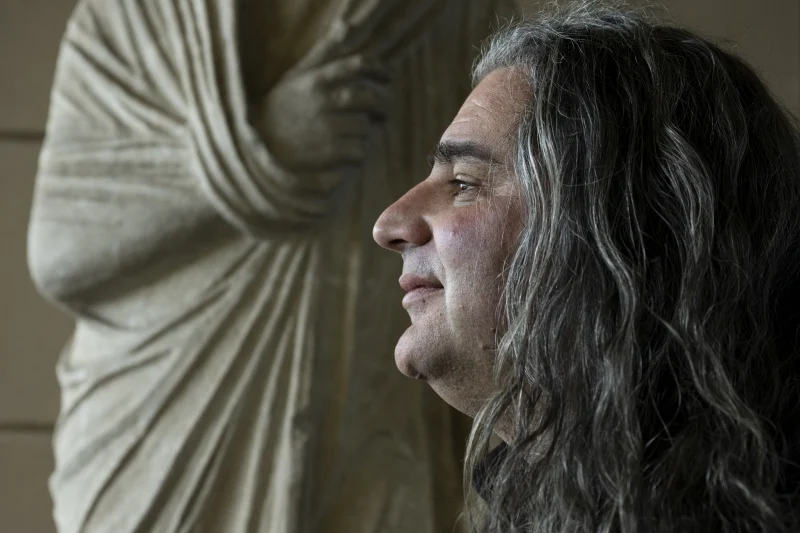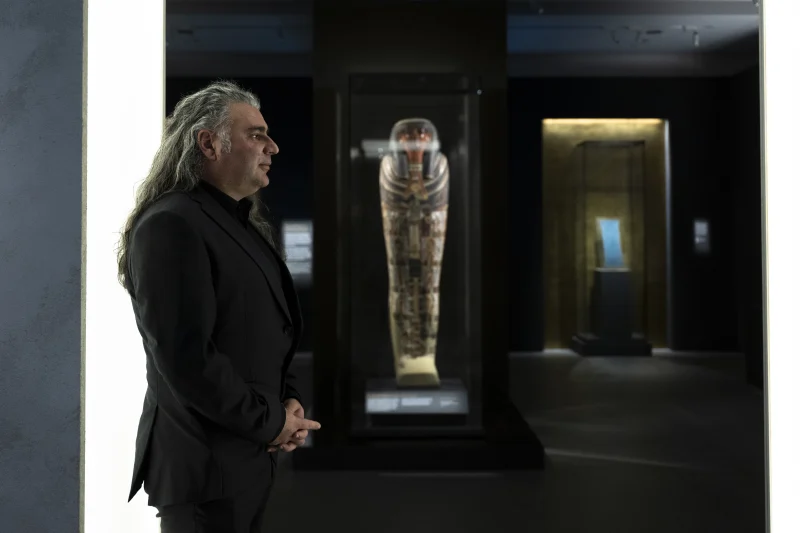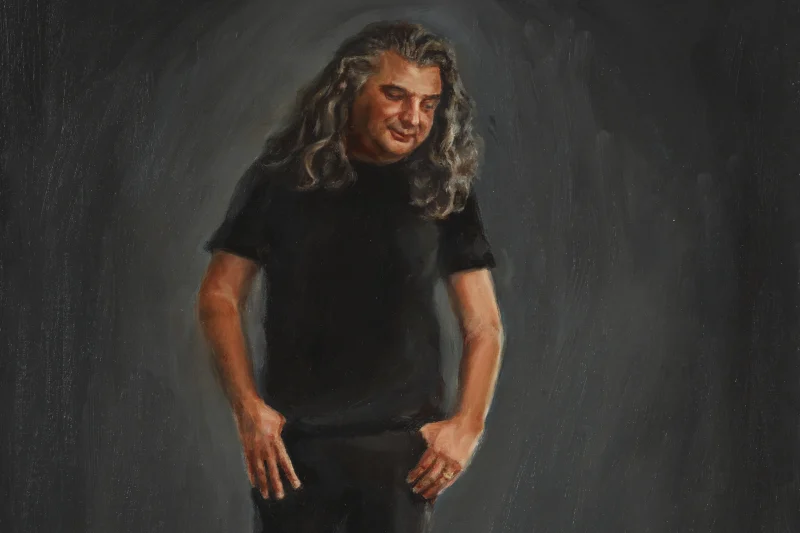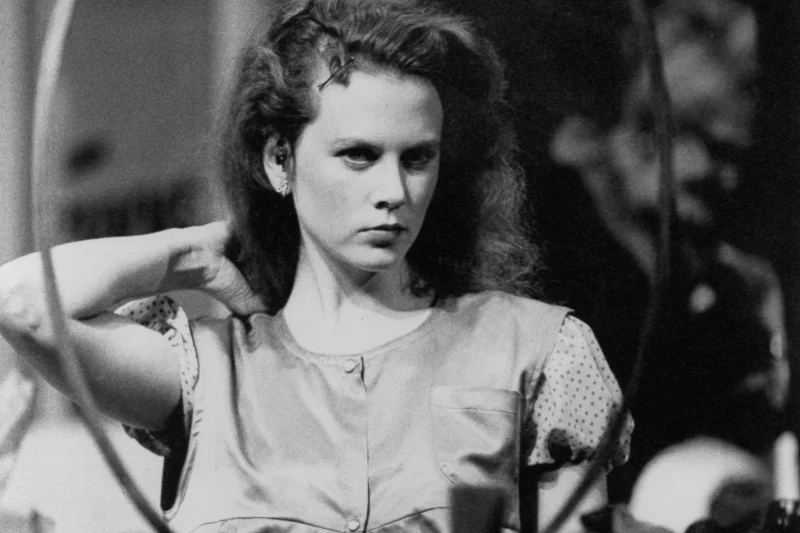The one-time struggling artist who is Sydney’s newest cultural leader

Written by Linda Morris. Originally published by The Sydney Morning Herald. October 6, 2023.
When Michael Dagostino told his Italian-born mother he wanted to go to art school, she cried.
“She was like ‘how are you going to support your family? How are you going to live? How are you going to eat?’ Literally, she just broke down.”
Turns out her eldest son was not cut out for an artist’s life: “I was terrible. I tried it for five years. Shows were dwindling. No one was interested.
“That’s where it kind of started, this career as an arts administrator, realising that, okay, I’m probably not going to be an artist but I can find the gallery, write the proposal, run the media, and put on a good show.”
In March, Dagostino took over from David Ellis, the retiring director of Museums and Cultural Engagement, at the University of Sydney, a role in which he cares for the university’s Chau Chak Wing Museum and Seymour Centre.
He brings to the university campus 25 years of experience creating and curating exhibitions and programs at cultural venues in western Sydney, packing as much creative punch as possible on the smallest of budgets.
The last eleven of these Dagostino spent at the Campbelltown Arts Centre, alma mater, too, of the Powerhouse’s CEO, Lisa Havilah.
Dagostino has had a finger in many pies besides: he sits on the board of the Sydney Writers’ Festival and Regional and Public Galleries of NSW and was recently appointed to the ministerial steering committee seeking public comment on a new arts and creative industries’ strategy for the state.
It’s usual for arts administrators to hold a university degree, maybe even a second.

Dagostino completed his third year at the National Art School and received a Diploma of Fine Art but had dropped out of the undergraduate degree and then from a postgraduate arts administration course at the University of NSW.
“Probably eight years ago I got to the point where I felt I needed to get a masters, PhD, or at least one degree and I spoke to Liz Ann Macgregor [then director of the Museum of Contemporary Art] and she said, ‘no one will care as it is about the work you are doing now’.
“The critical bit is on-the-job training, and I’ve had a long apprenticeship. If you don’t have that as a foundation, then it’s very difficult to be working with an institution.”
We are sitting on the terrace of Sounds Sydney, the cafe of the Chau Chak Museum, from which the geography of Dagostino’s new role can be mapped.
Xeni Kusumitra’s portrait of Dagostino, a finalist in the 2021 Archibald Prize, captured a true likeness of the arts administrator dressed in his usual black T-shirt and jeans.

This late Thursday morning, Dagostino is sporting a suit, also black, his long hair falling over his shoulders.
From a classic cafe menu, we order a wagyu cheese burger, dressed in red cheddar, lettuce, tomato and beetroot, and horseradish relish. It’s a moreish multiple-napkin mop-up job on a cool autumn day.
“I see part of my job is making the museum outward-focused with audiences and connecting the Seymour back to the university,” he says. “It’s about bringing the walls down.”
To our back is the museum, the pride of the university, which opened in 2020 at a cost of $68 million.
It brings together some of the university’s rarest objects including the oldest natural history collection in Australia and the largest and most important public collection of antiquities in the Southern Hemisphere.
To the right is the sandstone quadrangle of the university, representing the beating heart of academia and the rich specialist knowledge that underpins the museum’s practices.
To the left is busy Parramatta Rd, forming a moat to those local neighbourhoods Dagostino is keen to reach and “make sure they understand the museum is for them”.

The Australian Museum and the Powerhouse Museum to which the university shares common goals and wants to establish deeper partnerships sit beyond the horizon but centre of mind.
On the edge of Victoria Park, is the Seymour Centre, where Dagostino is plotting the physical transformation of its three main theatres for its 50th birthday celebrations in 2025.
The Seymour Centre was founded in 1975 and occupies an important place in Sydney theatre history. It’s where the likes of Jacki Weaver, Judy Davis, Russell Crowe, Cate Blanchett, Nicole Kidman, and Mel Gibson performed their earliest roles.
“It’s time for renewal. The building is getting a bit tired so we would love to bring it back into the future while celebrating its history,” he says.
“Our major focus over the next two years will be figuring out how we can do that. With Arts Minister John Graham announcing a major push for theatres, we’d love to be part of that conversation.

“The economics say we should be looking at existing theatres and renewing them first before we start building new theatres, and this includes theatres in western Sydney as well including the Joan at Penrith and the Roxy at Parramatta.”
Dagostino has long been a passionate advocate for western Sydney. He grew up in Camden and Campbelltown, lives in Granville with his wife and three sons, and has long argued for a better funding deal for artists and cultural organisations in Western Sydney.
Two weeks before leaving Campbelltown, the gallery secured almost $80 million in government funding for a new 350-seat theatre, artist residency studios, collection storage, and double exhibition space, after several years of campaigning and disheartening knockbacks.
“There are a lot of people that don’t realise how critically engaged and how great Western Sydney is at telling stories that are relevant to people’s lives,” he says. “We have to be relevant. We have to really fight for the resources we have.”
At Campbelltown, Dagostino helped shaped visual culture in Sydney, championing contemporary artists who have, in the main, lacked sustained institutional backing including Karla Dickens, Luke Sciberras, Lisa Reihana, and Khaled Sabsabi. In 2016, he curated Mike Parr’s On Manus Island, the gallery spaces literally walled up to show the claustrophobia of refugee detention.
But it is the exhibition With Secrecy and Despatch, curated by Tess Allas and David Garneau, that Dagostino names as a career highlight.
An exhibition four years in the making and involving artists from Australia and Canada, it drew national attention to the 1816 Appin Massacre, a long-forgotten, ignominious chapter of early colonial race relations.
“The response was much larger than anticipated,” Dagostino said. “We received national profile and the site where this tragedy took place received heritage listing last year, that’s the power of art,” he says.
“We can have difficult conversations using art and change the way people think about different issues.
“That’s what I’m realising here in the museum; objects have that same level of power when the stories are told in a contemporary way. They can have the same level of emotional charge that art has.”
It was in Year 11 at Airds High School, the year his parents divorced, that Dagostino discovered a love for art.
“I had this great art teacher, Ms Bateman, and she would just let me hang out in the art rooms and so for years 11 and 12, I spent more time in the art rooms than going to class. She introduced me to artists like Mike Parr and Stelarc.”
Studying Fine Arts he met his wife, Marian, and later started an arts management company, Michael and Michael Visual Arts Project Management, initially as a joke.
During five years as Exhibitions Manager at the Casula Powerhouse Arts Centre, he was taught the value of knowing one’s audience.
“The show was The River is Dead (Long Live the River) and we were having a crisis with an exhibition,” he recalls. “We hadn’t finalised the artist list. We hadn’t worked out what the thematic was.
“Kon Gouriotis was the director, and he asked three fundamental questions that day that still stick in my mind: Who’s going to come? What are they going to see? Why is it important to them? Those series of questions I still ask myself today.”
Dagostino cites the example of a scrap of pottery, from the museum collection with just five lines of text from Roman Egypt.
It reveals a young man and a soldier who lived together nearly 2000 years ago. The text is a letter from the young man’s father admonishing him for such an act, revealing that they were likely lovers. It shows how queer identities and homophobia were a part of the ancient world.
“I am inspired by the ways that stories from the past can be brought into a contemporary context by actively seeking out people with lived experiences,” he says.
“An aim is to see how the museum can bring our collection to life through providing and supporting opportunities for access, self-representation and critical engagement.”
Dagostino adds: “I think that’s the big opportunity.”
